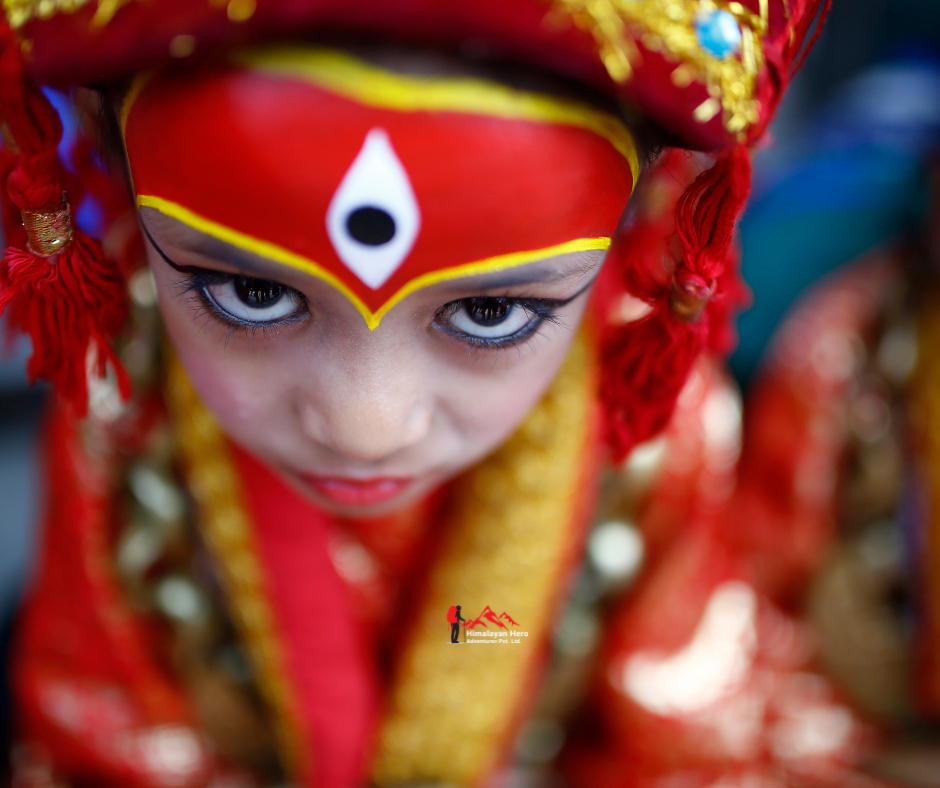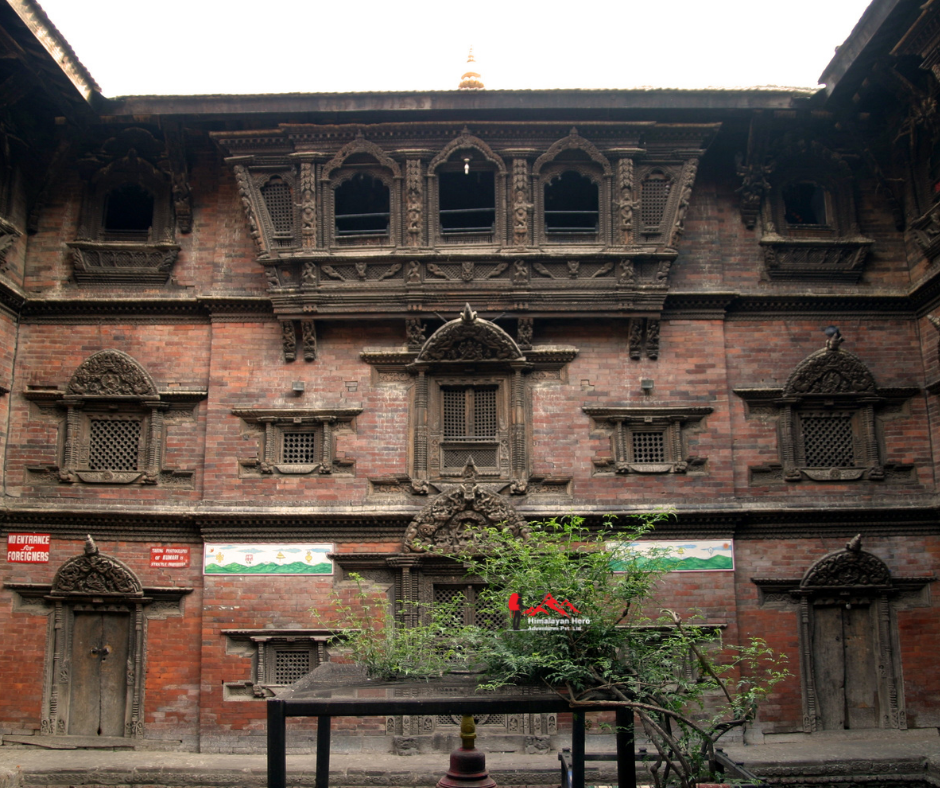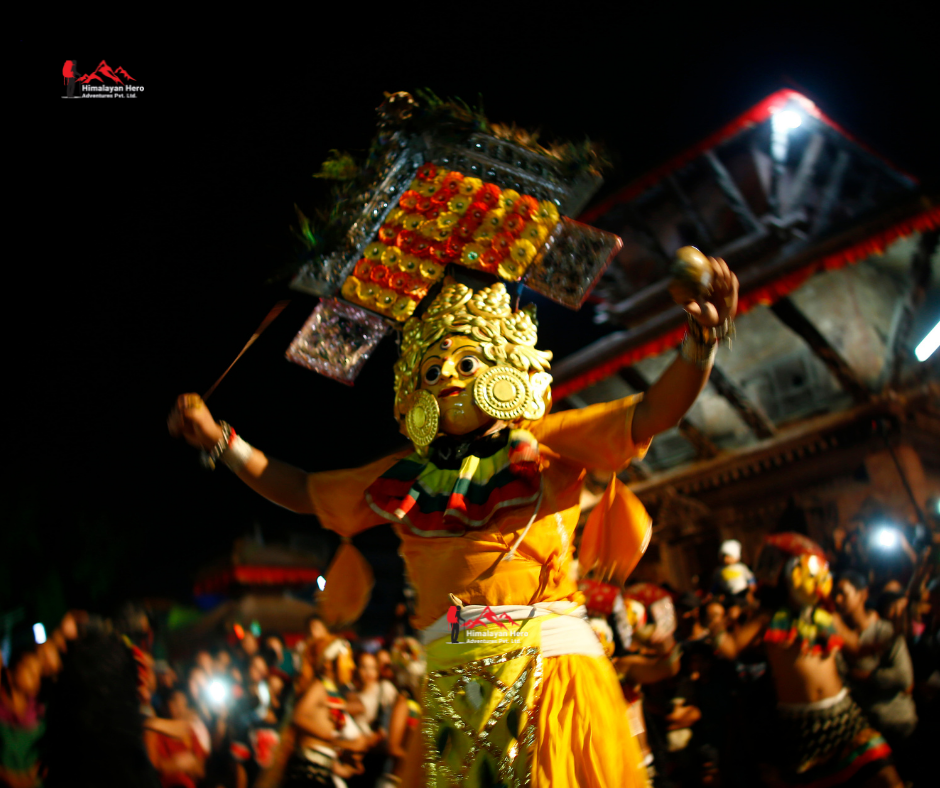Tourism
The only one-of-a-kind Goddess of Nepal, Kumari
April 4, 2023 By Himalayan Hero

In Nepal, you can see a live goddess, one of the few places in the world to do so. Among Nepal's many gods, goddesses, deities, avatars, and manifestations, there is an actual living goddess whom people worship and revere as statues, images, paintings, and symbols.
A Hindu-Buddhist religious tradition honours prepubescent girls believing they are manifestations of divine feminine energy or the 'devil'. A living virgin goddess, Kumari, derives from 'Kaumarya', which means "virgin". A girl from the Shakya community was worshipped as the Living Goddess by the Vajrayana sect of Mahayana Buddhism.
Until she menstruates, it is believed that Kumari is the goddess Taleju (the Nepalese name for Durga). After menstruation, the goddess is supposed to leave Kumari's body. As one of the Living Goddesses, the Kumari is selected in an elaborate ceremony.
 Caption: The Living Goddess Kumari attire throughout her regime.
Caption: The Living Goddess Kumari attire throughout her regime. Girls are screened for perfection based on 32 attributes of perfections by the Vajrayana sect of Mahayana Buddhism during their formative years, whether they are Shakyas or not, and whether they have an appropriate horoscope. There is then a terrifying Tantrik ritual performed, in which they meet the deities.
Even though she was going through trials, the real goddess stayed calm, and she was entitled to be worshipped as the Living Goddess. She then chooses clothing and decoration worn by her predecessors as a final test, similar to the Dalai Lama.
What is the history of Kumari Puja, and when did it begin?
Many stories about Kumari Puja are found in Nepal. An ancient Malla king, Jay Prakash Malla, has become a famous and most-believed legend in Nepal. In the King's chamber, people claim that the goddess Taleju played dice games with the King.
Mallas worshipped the clan god Taleju. Nobody was to know about it, nor was he allowed to tell anyone. On one occasion, however, his queen came upon them playing dice in his room. Taleju disappeared when the queen caught her.
 Caption: The Kumari Ghar, where the living Goddess Kumari resides.
Caption: The Kumari Ghar, where the living Goddess Kumari resides. In Ratnawali, a little girl from the Newari tribe (Shakya) will incarnate as the Taleju goddess before she leaves. In response to Taleju's claims, the King left the palace in search of a young girl possessed by the spirit of Taleju. Accordingly, the practice of worshipping the young girl began in the valley of Kathmandu in the 17th century.
Likewise, some believe that the King was Trilokya Malla instead of Jay Prakash Malla.
The deity approached him with sexual intentions one day while he was playing. The moment she caught sight of his actions, she vanished. Afterward, the King cried in regret and vowed never to repeat the mistake. She accepted the body of Kumari, a young girl of the Shakya family when they saw the King crying. That was the first time Nepal learned about the Kumari tradition.
Various tales tell us how and when the tradition began, but we do not know why and when. The beliefs here are just people's opinions, and there is no evidence from the past to support them.
In Nepal, how is a young girl selected as a Living Deity, Kumari?
A lot of people are interested in selecting Kumari. There are similar procedures for choosing the Dalai Lama and the Pachen Lama of Tibet. The selection is made by five senior Bajracharya priests, including Taleju Bhawani's chief priest, Kumari house caretaker, and head astrologer. Before proclaiming a child a living goddess, they examine her from multiple angles.
She must come from a Shakya family. There may also be a Bajracharya girl in the valley, aside from the royal Kumari. Her three generations, in addition to her, must also be of the same caste.
Furthermore, sound health, unblemished body skin, and uncut hair are essential requirements. Her body should not have shed a drop of blood before the examination. In addition, her teeth must not have been lost. After meeting the basic requirements, the priests examine her to determine if she matches Battis Lakshana's. Among the 32 Tattis Lakshanas, there are 32 perfections of goddesses in Hinduism. The physical appearances of her chest and thighs are like those of lions, and her eyelashes are like those of a cow.
She is also compared to the horoscope of the King or president for the horoscope to be complementary. When she meets every requirement, she receives further tests. As part of this quest, she must pass through a courtyard filled with beheaded animals and dance with masked men.
.png) Caption: Female enjoying the Prasad during Indra Jatra in Kathmandu.
Caption: Female enjoying the Prasad during Indra Jatra in Kathmandu.
The girl should not be afraid of crossing the courtyard. The girl is disqualified if she looks scared. They will take her for the ultimate test if she passes all of her previous tests. The ritual slaughtered goats and buffalos should be in a room with her for a night.
Additionally, some believe it is not 100% accurate to keep slaughtered animals in a room with beheaded animals and to be able to walk through them physically. No one knows what happens in the room. Her selection process is also too young for them to remember what happened. Her room is a secret that only the priests know about.
It is believed that she is an embodiment of the blood-loving Durga; therefore, she is shown some animal blood by the masked men so that they can see how she reacts.
She is finally asked to pick up the belongings of the previous goddess once the earlier tasks are complete, which include staying in the hidden room. In Nepal, she is the new living goddess if she picks them correctly among other goods.
Before the end of October, the selection process for a new living deity is completed. Following her selection, the priests sanctify her body by performing tantric rituals to rid it of impurities and blemishes.
She is said to be entered by the goddess Taleju. The girls have now been renamed Goddess Kumari and moved into Kumari Ghar. Kumari living in the valley, lives at her own home, following some ritual, while only the Royal Kumari is shifted to Durbar Square.
Until their mortal bodies bleed, they remain a living goddess. A woman's first menstrual cycle begins with bleeding. A new female deity is chosen following the first mensuration, based on the prerequisites discussed above. The title is sometimes lost when they suffer a cut and lose blood.
What life was like for Royal Kumari after she became Living Deity
Three to the four-year-old female child are the new living goddesses. After becoming Kumari, their lives drastically change. Their residence is a forbidding place for them. The family members are forbidden from visiting her. Various rules and traditions are observed. Besides the children from the same caste as her caretakers, her friend circle is minimal. Kumari, a female deity, suffers the dethronement of her parents and lives with her caretakers.
 Caption: Festival of Indra Jatra being observed in the presence of 'Living Goddess Kumari'.
Caption: Festival of Indra Jatra being observed in the presence of 'Living Goddess Kumari'. While she lives a life without material troubles, she must fulfil various ceremonial obligations. She wears jewel-toned items of clothing. Besides the turban and pagri, she wears a jama (cloak) to the ground. The 'Agni Chakshu' or 'Fire eye' is painted onto her forehead. This symbol represents her vision of the world.
Kumari Ghar is where she lives. A long queue of people waits outside the window of that palace, hoping that they can catch a glimpse of the living God.
Legend has it that even a glimpse of the little living God can bring good fortune. The illness is also believed to be controlled by Kumari because of her special powers. Several high-profile individuals travel to her for good luck and blessings. Visitors' actions are recorded and interpreted so that their futures are determined. The visitor will have bad times if she cries or laughs aloud, rubs her eyes, trembles, and picks up the food offerings. It can be a severe illness, a financial loss, or anything else.
It is possible to observe this small female deity in Nepal if you visit the area. Only on special occasions is she was taken outside, such as during Indra Jatras.
Festivals such as Indra Jatra are significant events in Nepal. At Indra Jatra, thousands of exuberant people pull the chariot with her inside. Her chariot is crowded with visitors. She is believed to bring good fortune to anyone who sees her, even for a brief moment. A large procession of devotees, colorful roads, dancing mask men, local instruments, and tuning are also beautiful sights. You can witness the celebration in Kathmandu if you go in late August or early September.
Her last step on the floor is after she is selected when she walks around the Durbar square. She is carried everywhere she goes when she is out of her home by her caretakers. The girl's feet have been purified and made holy after she becomes Goddess Kumari.
Formerly, even the King visited her to receive blessings by touching her feet. She is considered to bring good fortune if connected. She is still surrounded by people when she is out for a while.
The government provides some money to Kumaris from Kathmandu, Bhaktapur, Lalitpur, and Nuwakot while living as deities. Moreover, after losing the title of Living Deity, they receive a small amount as a pension.
Conclusion
Having a living goddess as a worshipper in our 21st century is a unique tradition worldwide, and the Nepalese people cherish it very much.
Kathmandu Durbar Square is where the Kumari Ghar (house) is located, and visitors can see her during their visit. As Kumari by Hindus is worshipped as the incarnation of Goddess Taleju and as Tara by Buddhists, travelers can observe religious tolerance among the two religions in Nepal.
Comment



.png)
 Caption: Festival of Indra Jatra being observed in the presence of 'Living Goddess Kumari'.
Caption: Festival of Indra Jatra being observed in the presence of 'Living Goddess Kumari'.